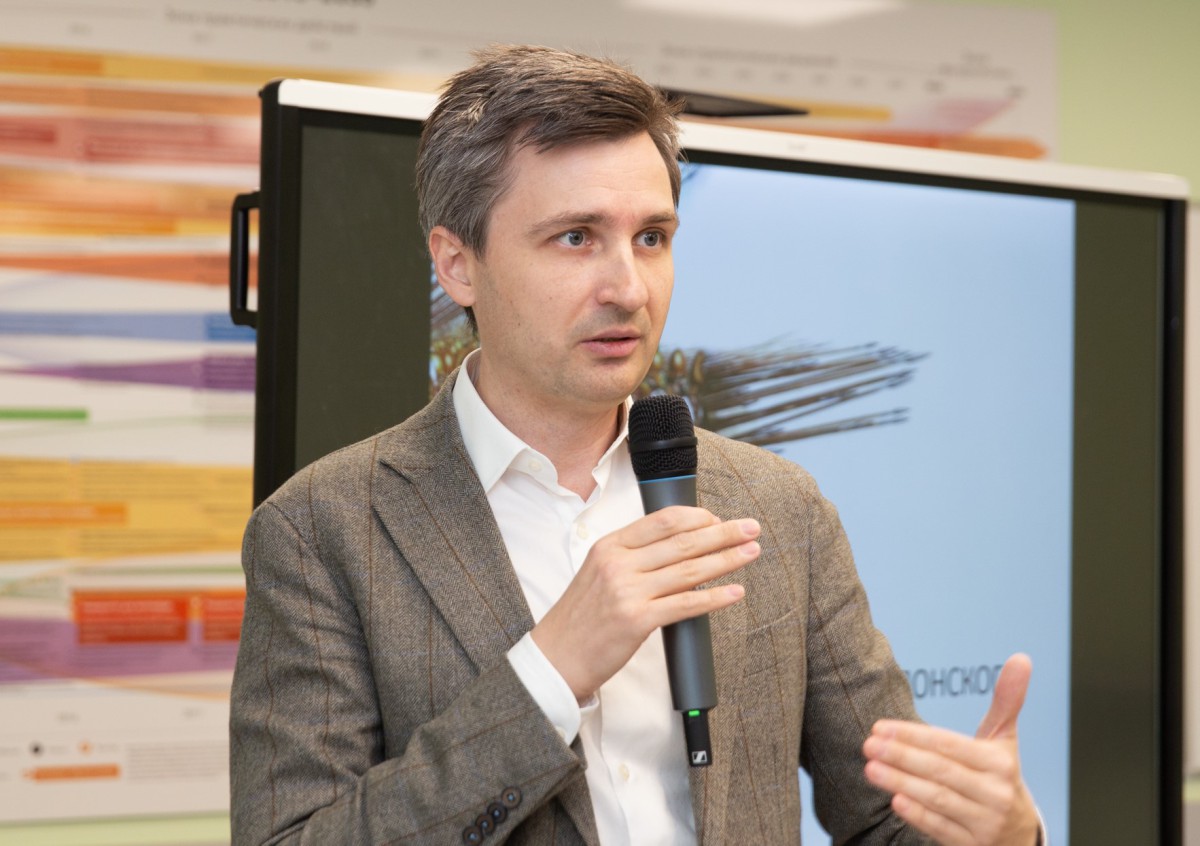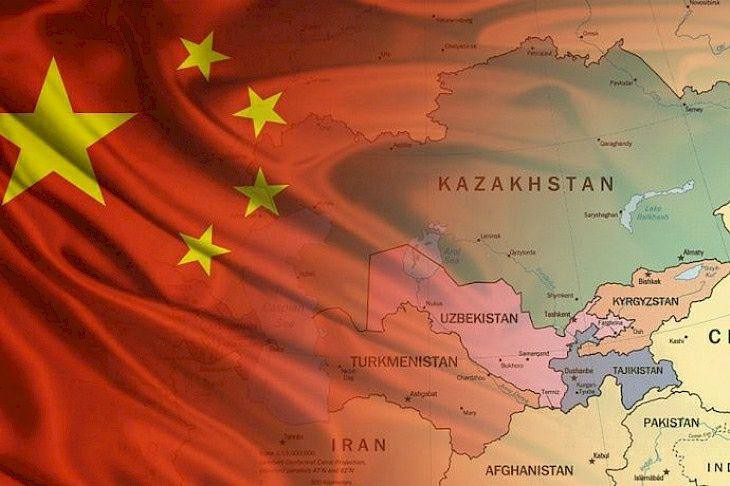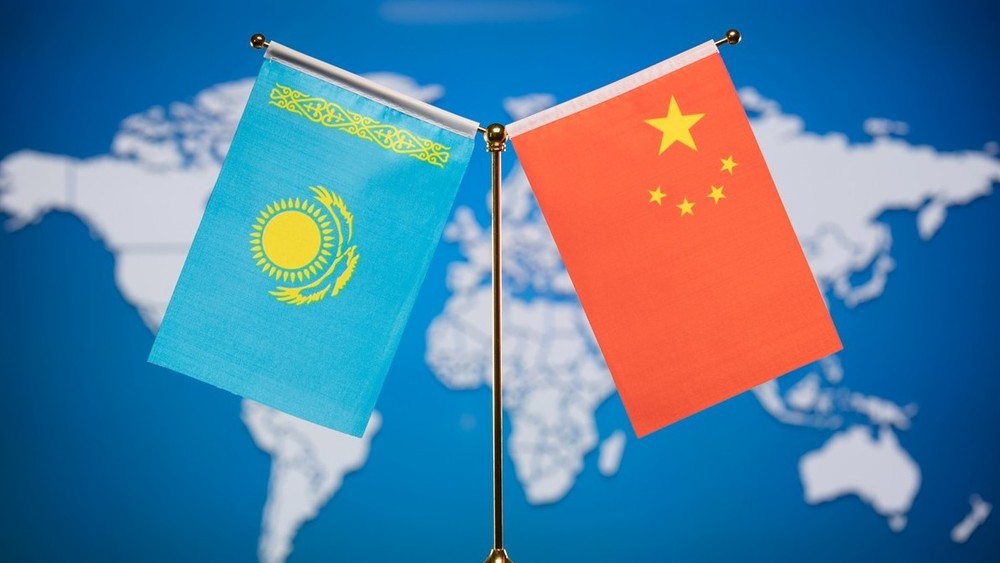In October 2021, the Head of State, Kassym-Jomart Tokayev, approved 10 national projects, which represent a comprehensive program to improve the quality of life of citizens. As early as January 1, the state, along with the responsible departmental bodies, will begin to implement them.
Nursultan Serikbay, director of the Strategic Planning Department of the Agency for Strategic Planning and Reforms, provided answers to finreview.kz analysts on how national projects will be implemented, how control over funds will be exercised, and what the difference is between national projects and state programs.
National projects – “reboot” of public administration
To begin let’s start with the main point: what are national projects, and why is the transition from state programs to national projects important?
Kazakhstan’s new State Planning System came into effect in February 2021. It enabled the establishment of an institutional framework for the implementation of reforms initiated by the President. The Kazakhstan-2050 Strategy – the state’s “guiding star” with the specific goal of entering the TOP-30 developed countries of the world – is at the first level of the System. Despite the fact that Kazakhstan’s First President, Nursultan Nazarbayev, presented the Strategy in 2012, many areas remain relevant today.
Mid-term priorities, which determine how our country will develop in the coming years, were missing from the state planning system. These priorities, ten National Priorities in three key areas, were announced in February of this year. They are based on Kazakhstan’s National Development Plan until 2025 and the National Security Strategy.
Development concepts and national projects are at the second level of the state planning system. National projects embody the spirit of the times and are strategic documents whose primary goal is to improve the lives and well-being of the citizens of Kazakhstan.
They consolidate the key indicators of the Kazakhstan-2050 Strategy, National Priorities and the National Development Plan, take into account the events of the Nur Otan party’s electoral program and other important instructions from the country’s leadership. Each national project is aimed at a high-quality solution to existing issues, as well as at the further development of key industries in accordance with the “nationwide” approach. That is, for the first time, we tried to change the vector of state bodies from fulfilling their functional duties to the format of joint work with other state bodies, in order to implement common state tasks.
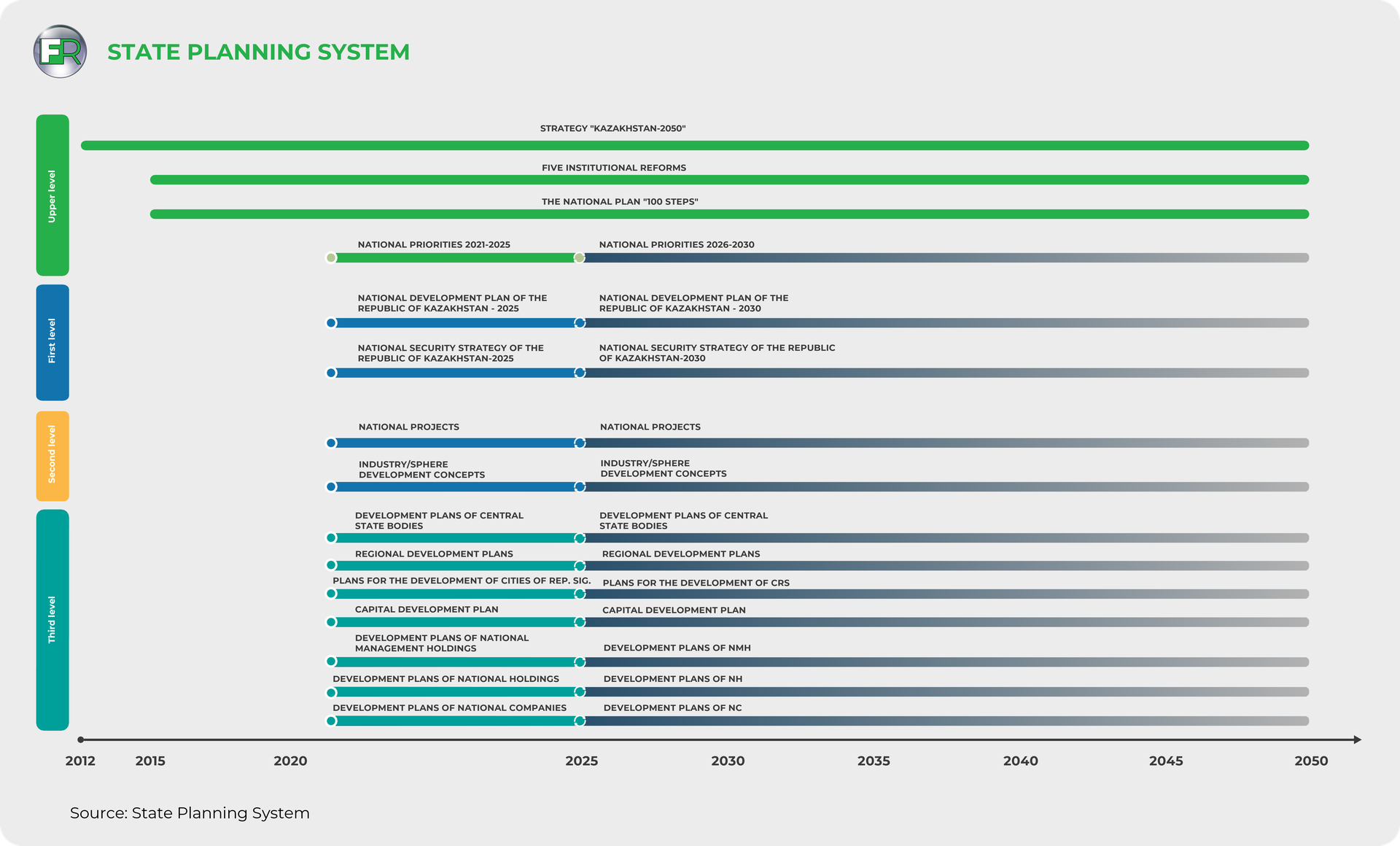
Have you managed to effectively transform state programs into national projects while avoiding duplication of state tasks?
First and foremost, I would like to emphasize that positive state programs will be recognized in the country’s history. A number of programs, such as Nurly Zhol and Nurly Zher, as well as industrialization programs, have enabled Kazakhstan to make a qualitative economic breakthrough, creating hundreds of thousands of jobs, improving housing conditions, and ensuring transportation connectivity.
Of course, there were some challenges, such as a lack of funding, cumbersome programs, a lack of personal responsibility, and an excessively large number of performance indicators.
Therefore, one of the criteria for developing national projects was their brevity. There are approximately 230 indicators and 9 country-wide mega-indicators identified in total. For example, increasing life expectancy to 75 years, closing regional disparities, ensuring 100 percent population coverage with basic services, and creating more than 1 million jobs.
The next distinction between national projects and state programs is that personal responsibility is clearly defined. The respective minister is given direct responsibility for each national project. Simultaneously, the participation of other departments is envisaged for the implementation of some tasks, the responsibility for which is also specified. The Deputy Prime Minister oversees the entire process. That is, the indicators and responsibilities of government agencies are clearly defined with the adoption of national projects.
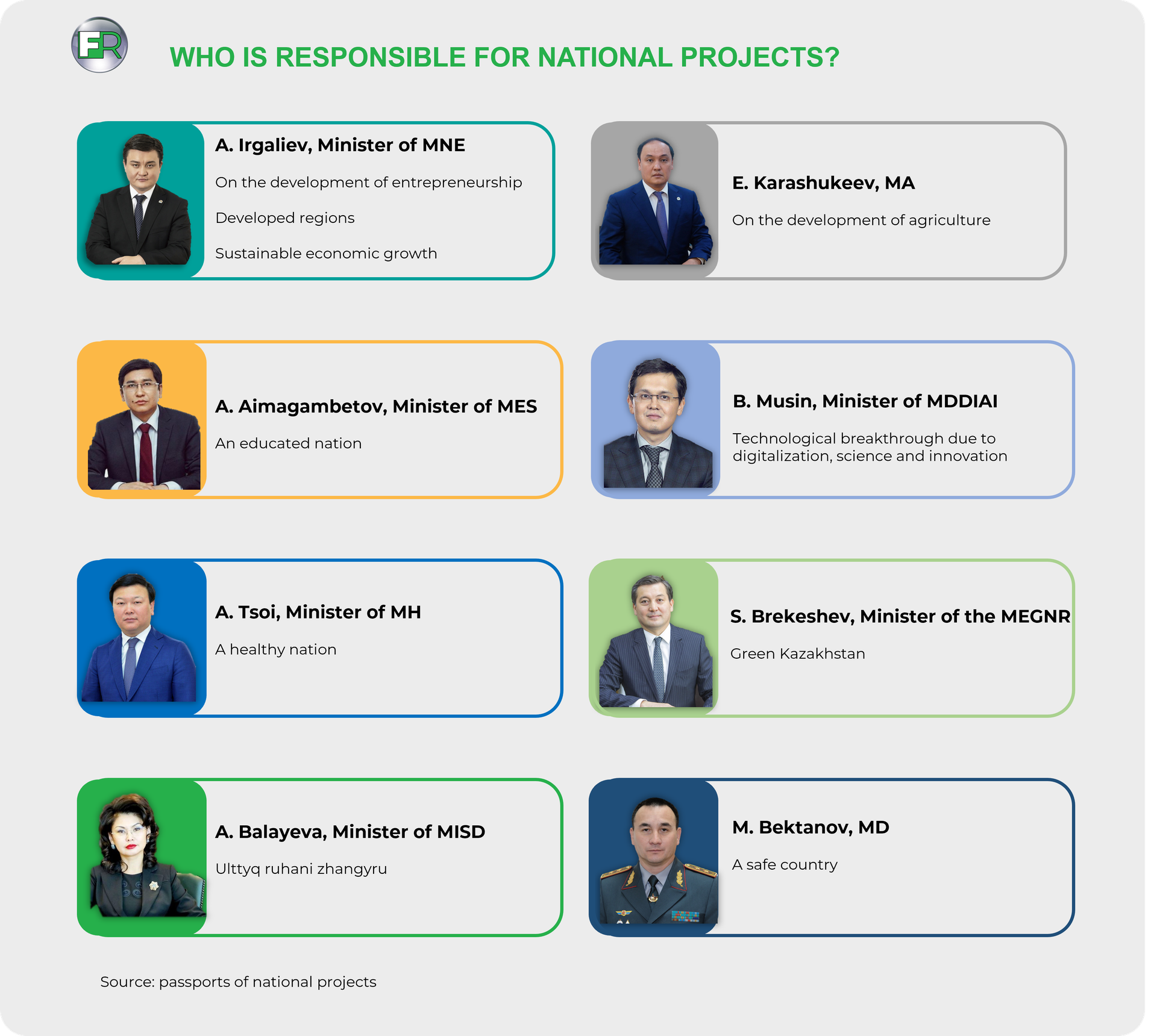
The third difference is the provision of funding. State programs are faced with underfunded. We have managed to avoid this. The country’s three-year budget includes expenditures from the state budget for the implementation of national projects. Extra-budgetary funds have also been calculated; they will be attracted through investment projects on which government agencies are already working.
The fourth distinguishing feature is the AGILE structure. The pandemic and its aftermath have demonstrated the importance of making decisions as quickly as possible, responding effectively, and anticipating potential changes. The national projects in their structure will allow them to adapt to the necessary changes as soon as possible.
National projects focus the state apparatus on results
How will the mechanisms for implementing national projects differ from the mechanisms for implementing state tasks that existed previously?
With the adoption of national projects, government agencies will move away from the cumbersome systems of program-targeted planning, both methodologically and in some cases even psychologically. National projects concentrate the state apparatus as much as possible on country-scale outcomes, with an assessment of the impact on citizens’ quality of life.
The National Project Office and the National Analytical Center for Monitoring Reforms were established as part of the Office of the Digital Government. These centers will help with the methodological transition, which will be based on project management and results management approaches.
Why are Kazakhstani national projects similar to those of other countries?
All national projects are the primary public goods that our state apparatus must produce and distribute effectively in society. Every state in the world faces the same challenges; there is nothing new here. For example, the projects “Green Kazakhstan” and “Safe Country” are direct responses of the state to societal systemic demands. Not momentary, but clearly defined and within the framework of the balance of public interests.
Similarly, in terms of the health-care system, it became clear during a pandemic that not only healthcare, but also Kazakhstanis’ attitude toward their own health, needed to be adjusted. We must not overlook education as a critical issue for the nation’s prosperity. There are a large number of children in the country who are already in school, and they require a good school education, without which any programs for societal or economic development will be much more difficult to implement.
In general, all of the state’s initiatives were consolidated and structured into national projects.
Who participated in the creation of national projects? Did members of the community take part in the discussion of the main directions?
Prior to the adoption of national projects, a large-scale effort was made to reorganize and improve the strategic and state planning system. The responsible state bodies were involved in the development of national projects. Initially, each of them desired to have their own national project and to carry it out calmly without regard for others. As a result, approximately 25 national projects were proposed. However, there cannot be too many priorities, just as there cannot be too many priority projects. In this regard, their number gradually decreased during development, first to 18, then to 10.
Kazakhstani and international experts, as well as development organizations, were actively involved in the creation of national projects. Each national project was evaluated within the framework of the President’s Supreme Council for Reforms and the Supreme Council’s six advisory committees, which include representatives from government agencies, experts, and members of the public. MPs were also actively involved in project evaluation.
That is, they were developed using an integrated approach in which all interested government agencies, independent organizations, and experts were involved.
How will control over national projects be exercised? Who will be responsible for implementation?
National projects will be monitored on a continuous basis. The results will be discussed on a regular basis, once a week at the ministerial/vice-ministerial level, once every two weeks at the deputy prime ministerial level, and once a month at the Prime Ministerial level.
The Supreme Council for Reforms will conduct a quarterly review of project progress. Simultaneously, ASPR will prepare its own assessment of implementation progress for the Head of State.
Financing of national projects
What funding sources are considered for the implementation of national projects?
The republican and local budgets are used to fund national social projects. This is a part of the social contract between the state and the people, which will always be maintained. As far as economic projects are concerned, extrabudgetary funds are heavily for a variety of reasons.
First and foremost, the government is actively seeking foreign investment. Over 1,600 investment projects worth 32.4 trillion tenge have already been formed, and the annual volume of FDI is expected to reach 30 billion US dollars by 2025.
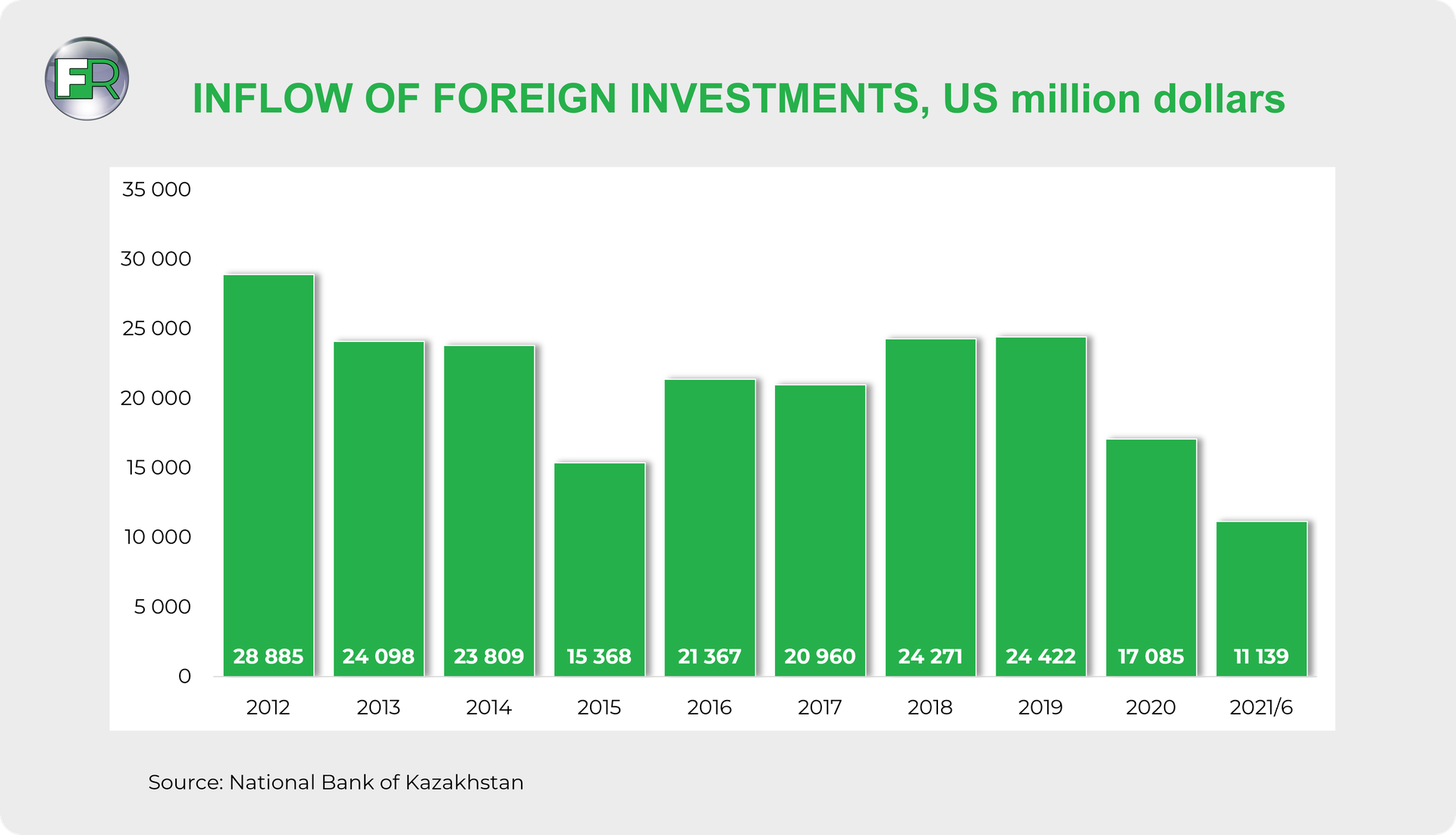
Second, Kazakhstan has development banks, financial institutions, stock exchanges, and a venture capital fund that successfully attract funds to Kazakhstani projects. The Eurasian Development Bank, Kazakhstan Development Bank, European Bank for Reconstruction and Development, Astana International Financial Center, Kazakh Invest, KazakhExport, Kazyna Capital Management, Damu Fund, and others are among them. For example, since 2018, the AIFC has attracted more than $ 4.5 billion into the country’s economy, with the volume of attracted investments expected to reach $ 10 billion by 2025.
In other words, raising extrabudgetary funds is a concrete, realistic, and necessary task. This means that funding is available for the implementation of national projects.
How will the efficient and effective use of financial resources be monitored?
In Kazakhstan, the legislation-mandated measures of financial control and governmental audit are in effect. However, we must take a proactive approach to this issue. In this regard, ASPR proposed the formation of a permanent special commission comprised of representatives from the Government, the Presidential Administration, the Accounts Committee, the Financial Monitoring Agency, the Parliament, experts, and the general public, with meetings held at least every six months. The commission’s responsibilities will include not only monitoring the funds allocated for the implementation of national projects, but also assessing potential risks.
In terms of preventing potential cases of corruption, the Office of the Digital Government, as well as the availability of digital tools for continuous monitoring of the implementation and spending of funds on national projects, will play a significant role.
Is it possible to redistribute funding for national projects based on the level of risk?
This is the heart of the national projects. They have an adaptable system that can change based on the current situation. In the event of a coronavirus pandemic, for example, funds for health care development could be reallocated.
That is, when transferring funds to another national project or within a project, the situation on the global market and within the country will, of course, be important.
People are the number one priority
How will national projects be carried out on a local level?
For effective work to achieve national project indicators, it is critical to adhere to the principle of management unity within the Office of the Digital Government, where project activities will be broken down and constantly monitored, both from the center and from the regions. It is obvious that digitization greatly simplifies the work of gathering data on the performance of both central government and local executive bodies.
One of the most important aspects of national projects is their country scale, and, of course, proper work alignment between the center and the regions will be critical here. At the same time, I’d like to draw attention to Kazakhstan’s Territorial Development Plan, which is currently being developed and will institutionalize the relationship between the center and the regions, as well as determine the key development directions for each region. The peculiarity of national projects in this regard is that we do not assign the same task to every region. Each region is unique, with its own set of strengths and industries that must be developed. National projects target and differentiate activities based on regional needs.
Will the adoption of national projects affect the work of civil servants?
The consistent and concrete relationship between key government initiatives is an important component of the current ambitious reform program. The Concept for the Development of Public Administration was adopted in February 2021 by Presidential Decree, with the goal of increasing the efficiency of the state apparatus. This concept, along with the systems of state planning, budget planning, and digitalization, is one of the foundational systems for constructing a “person-centered” state model.
In this regard, the link between planned changes in the public administration system and the implementation of national projects is clear. They share a common foundation and a common goal: to carry out tasks that improve the lives of citizens.
Population census as a tool for the development of the country
The population census has concluded. Will the findings have an impact on the implementation of national projects?
Indeed, the population census is a significant event in Kazakhstan’s socioeconomic life; it was conducted not to determine how many people live in Kazakhstan, but to gain a better understanding of the country’s current economic situation. Its findings will enable the government to plan economic and social policies for the next ten years.
In other words, the census data, which will be released in the first half of next year, will enable the state to make the necessary pinpoint changes. According to preliminary data, 20 percent of Kazakhstan’s population is comprised of children aged 0 to 9 years old. Of course, once we have the full census results, we will know which regions have the most children and where new educational institutions are needed.
A similar situation exists in housing and communal services, with the state planning to construct up to 100 million square meters as part of national projects during 5 years. The population census will allow us to determine which regions require housing.
In other words, the results of the population census will allow the necessary adjustments to national projects to be made.
To what extent, taking current digitalization trends into account, will the walk around census importance remain, say, in ten years?
I believe that the walk around format of population census will be obsolete by 2030. Already, 42.5 percent of current census respondents completed it online. This is already a sizable figure, comparable to those of European countries such as Lithuania, Bulgaria, Italy, and Portugal.
In this regard, the databases now accumulating in the Office of Digital Government will allow us to have a complete picture of the state of the population, the state, and other industries in 10 years.







